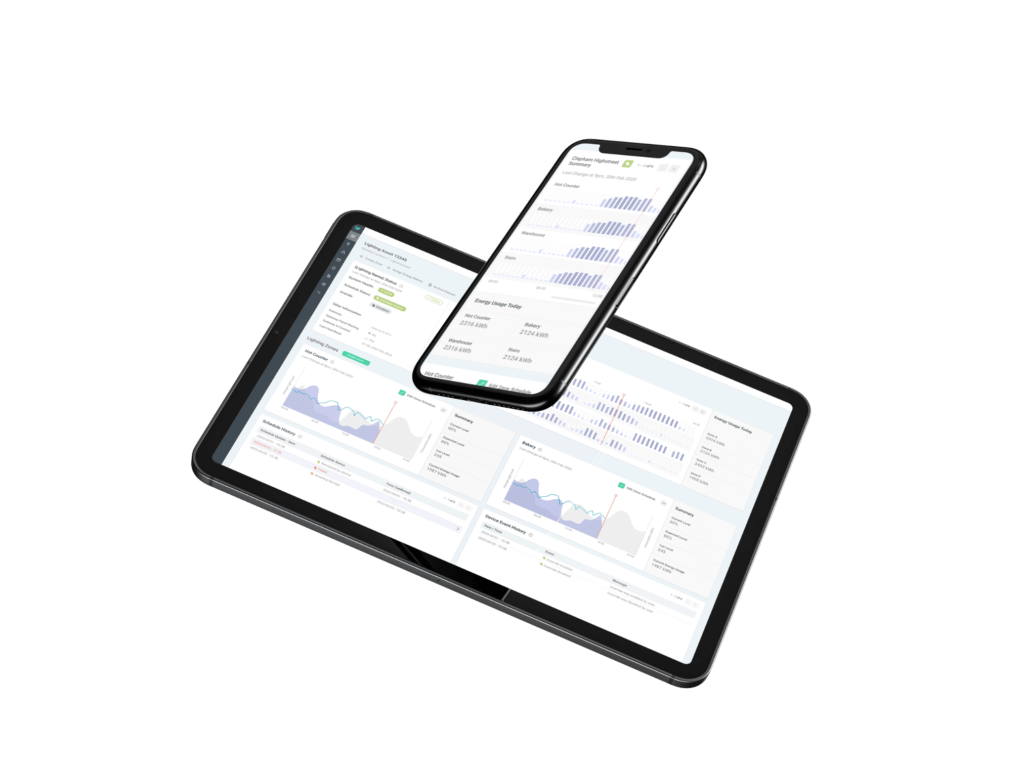There’s more awareness around energy efficiency now than ever before. Individuals and businesses are more conscious of efficient energy use in areas they can control – turning equipment off (or down) outside of operating hours, for example. With real ESG/CSR goals to meet, businesses are searching for ways to further reduce wasted energy and tighten up efficiency across the board. The desire to create a sustainable impact while saving money is a mouth-watering prospect; it almost sounds too good to be true. But this desire has a very real, and surprisingly simple solution – the implementation of an energy management system (EnMS).
After a punishing and ongoing energy crisis, implementing an EnMS is kind of a no-brainer, but with so many different avenues to go down, knowing where to begin can leave people with cartoon swirls in their eyes and birds circling their heads. What if I told you that there’s actually only one place you can begin? Well strap in, because that’s exactly what this article is all about.
The future of energy is close; right now we’re in a sort of transitional period – the energy transition, if you will. More and more businesses are realising the benefits of combining dispatchable assets, renewable energy generation, energy storage solutions and electric vehicles. Energy management software is the glue holding everything together, but how are we supposed to know where to begin? This is where regulations and certifications like ISO 50001 come into the picture.
What is ISO 50001?
ISO 50001 is a certification that’s helping industrial and commercial businesses manage their energy consumption through the development of energy management systems.
ISO 50001 is based on the management system model of continual improvement also used for other well-known ISO standards. This makes it easier for organisations to integrate energy management into their overall efforts to improve quality and environmental management.
This certification provides a framework of requirements for organisations to:
•Develop a policy for more efficient use of energy
•Fix targets and objectives to meet the policy
•Use data to better understand and make decisions about energy use
•Measure the results
•Review how well the policy works
•Continually improve energy management.
An energy analytics platform (ahem… Hark) can integrate into a business’s EnMS and help support the criteria for ISO 50001, making it a useful tool in any energy efficiency ‘toolbox’. For example, the ISO 50001 requirement for developing an energy efficiency policy, and then fixing targets and objectives to help meet the policy. Hark’s software can help with creating an energy baseline, creating energy performance indicators, tracking the progress of energy-saving projects and alerting the relevant people when targets are going to be hit or missed.
Better understanding and making decisions about energy use is another area where having real-time energy and asset data fed into custom dashboards is going to make a real impact. Being able to understand the performance of individual assets (as well as entire floors, buildings, and areas) helps in identifying assets (or areas) in need of improvement.

What is an Energy Management System?
An energy management system is a framework, composed of people, processes, policies, software and more, with the ultimate goal of continually monitoring and improving energy efficiency. Advanced energy management systems take things a step further, with the ability to also optimise assets, energy storage solutions (energy batteries) and renewable energy generators (such as solar PV). These additions can help not only save money (and help the environment) but even open up new revenue streams via grid services too.
Often energy management systems will be organised and maintained by a dedicated energy manager or facilities manager. It’ll be the responsibility of these people and their teams to identify inefficiencies and implement new processes and operational changes to fix them.
Energy management software such as The Hark Platform can help with this by connecting to assets; displaying, organising, and reporting on energy data; identifying significant energy uses; setting up triggers; creating automations; and much more.

What’s the First Step to Implementing an Energy Management System?
First and foremost, developing an understanding of what currently is happening with the energy in your estate is absolutely crucial. While this is something that still goes overlooked, more recently it’s beginning to change. To do this, we need connectivity. Data being fed directly into a platform, which can organise and present data in a way that makes sense, is the critical first step.
Which periods in the day is consumption highest?
Which assets consume the most?
How does consumption correlate with production?
Understanding core energy-consuming areas of your estate in detail unlocks the insights needed to begin implementing new policies and behavioural change, adjust operating processes and more. From here you can begin your journey to ISO 50001 certification and become a more energy-efficient/sustainable organisation. With this foundation in place, your businesses can progress to more advanced activities and begin to automate energy saving processes through control strategies.
How to Gain Connectivity of Commercial/Industrial Assets?
Hark makes gaining connectivity easy; our MQTT broker and communications protocols adapters mean that the discovery of assets and getting data into the platform is more simple than ever. It’s worth noting that Hark can connect to any industrial assets. The Hark Platform is entirely hardware agnostic and works with a variety of communications protocols and asset types. In terms of lead times, depending on which assets you’d like to connect to, it can be as little as a matter of minutes to get connectivity, or in more complex areas Hark can help you along the journey.
Getting started with the implementation of an energy management system can seem like an overwhelming task, but by getting connectivity of your assets first, you’ll be closer than you think to ISO 50001 certification. If you’d like to know more about how Hark can help you on your journey, get in contact today.



